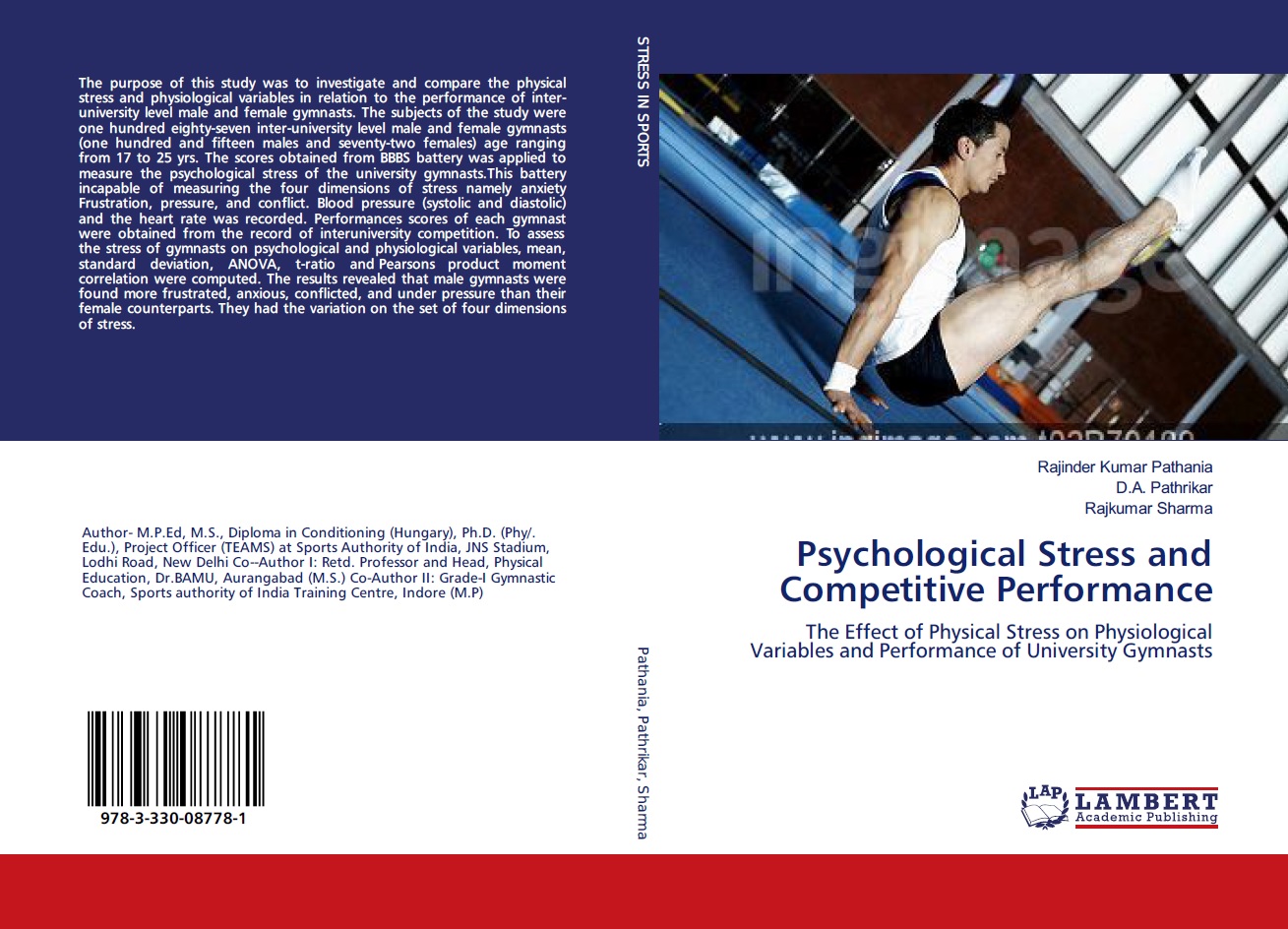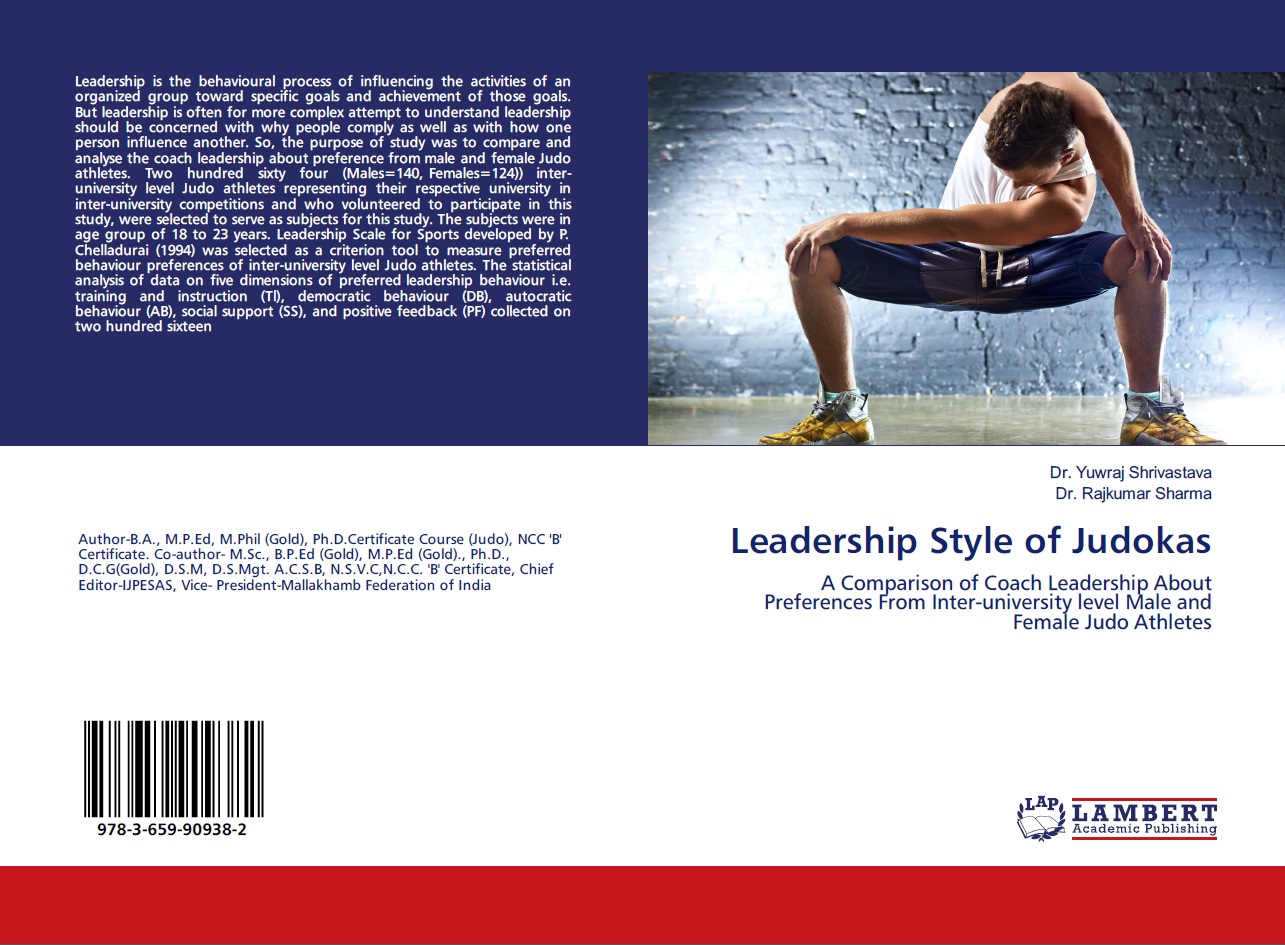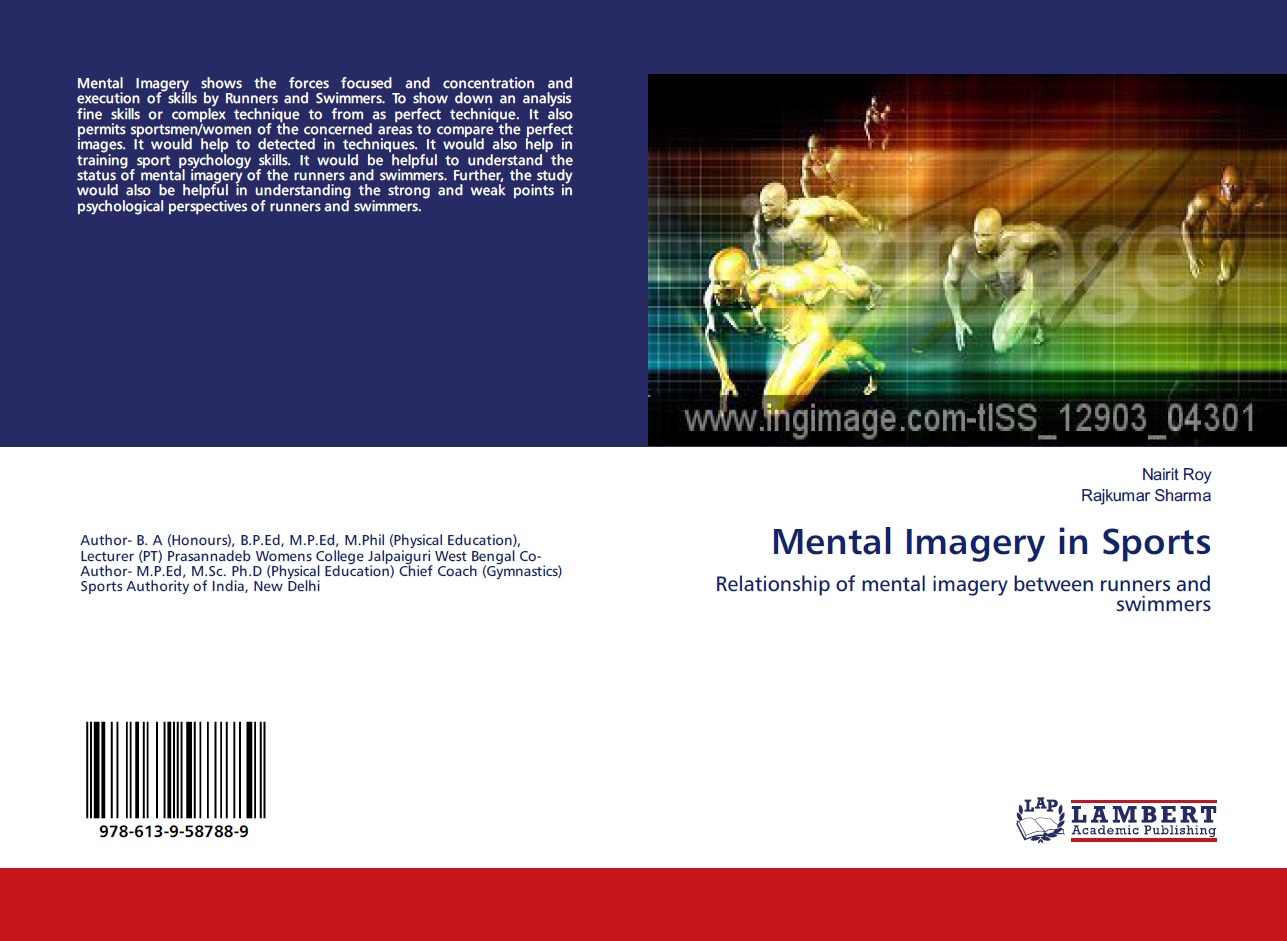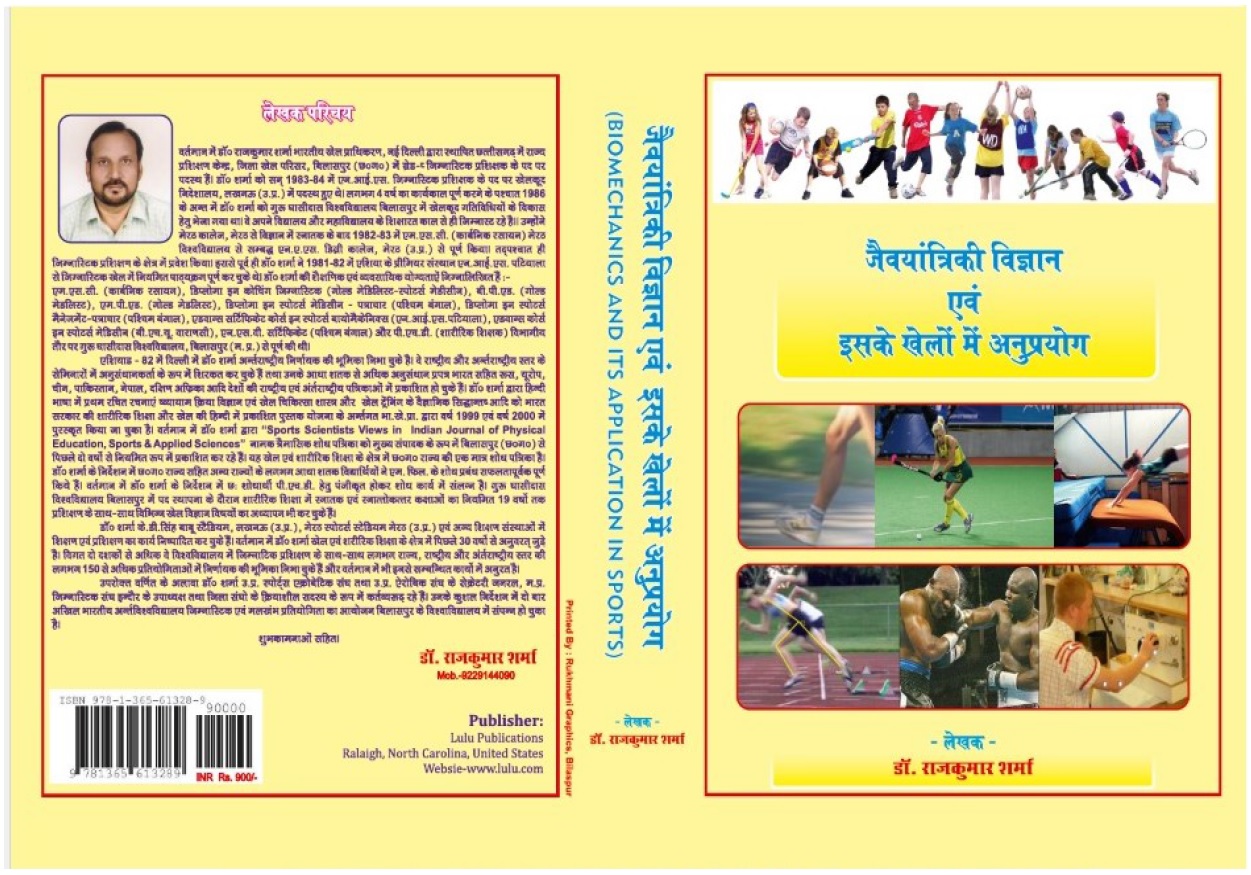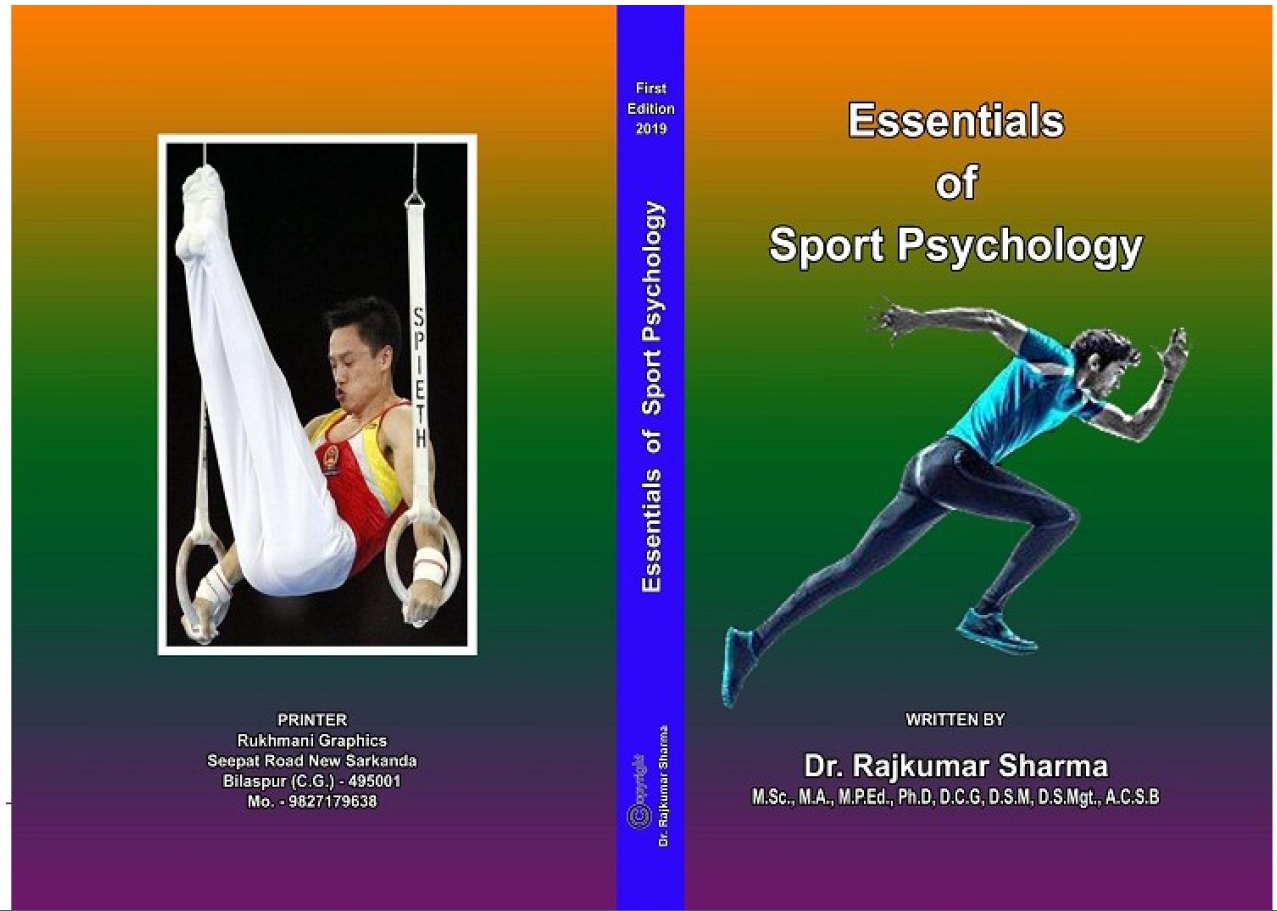| S.No. | Total View Count | Title of Manuscript | Page No | Download/ PDF |
|---|---|---|---|---|
| 1 | MAXIMISING ATHLETIC PERFORMANCE: ENHANCING STRESS TOLERANCE WITH THE CONCENTRATION GRID Author: Simranjit Singh1 | 19-31 |  4 4 |
Article info
doi no.: 05-2016-44975451; https://doi-ds.org/doilink/04.2024-51222469/IJPESAS/V13/NO.3/JULY-2023/A3
AFFILIATIONS:
1. MSc, Staffordshire University, Stoke-on-Trent, England, simranjit9@gmail.com, +918169687152
The influence of stress on athletic performance is well-acknowledged in sports psychology (Jones et al., 2020). Stress is a critical determinant of athletic performance, and it varies in interpretation and management among athletes, especially in individual sports (Hill et al., 2020). This study aimed to investigate the potential of a mobile-based application intervention, specifically the Autumn Arcade (2022) concentration grid-based mobile application, in enhancing the reactive stress tolerance (RST) of table tennis players. 8 national-level table tennis players (4 males and 4 females) aged 18-20 years were selected using a convenience sampling method. Participants were divided into experimental and control groups. The experimental group engaged with the mobile application for 25 days, while the control group continued their regular training. RST was measured using the Vienna Test System's determination test (S1). Post-intervention, the experimental group demonstrated significant improvements in RST. In contrast, the control group showed no significant changes. Effect sizes for the experimental group were substantial, indicating the practical relevance of the intervention. The study underscores the potential of technology in enhancing athletes' stress tolerance, especially in individual sports. While promising, the findings should be interpreted with caution due to the limited sample size and convenience sampling method. The integration of technology in sports training, as evidenced by the positive impact of the Autumn Arcade (2022) mobile application, suggests that mobile-based application interventions could be pivotal in achieving athletic excellence.
Keywords: Application, Concentration, Grid, Intervention, Psychology, Sport, Stress, Testing, Vienna.
References
Anshel, M. H., Kim, K., Kim, B., Chang, K., & Eom, H. (2001). A model for coping with stressful events in sport: theory, application, and future directions. International Journal of Sport Psychology, 32(1), 43-75.
Baumeister, R. F. (1984). Choking under pressure: self-consciousness and paradoxical effects of incentives on skillful performance. Journal of personality and social psychology, 46(3), 610.
Bhabhor, M. K., Vidja, K., Bhanderi, P., Dodhia, S., Kathrotia, R., & Joshi, V. (2013). Short Communication A comparative study of visual reaction time in table tennis players and healthy controls. Indian J Physiol Pharmacol, 57(4), 439-442.
Bland, H. W., Melton, B. F., Welle, P., & Bigham, L. (2012). Stress tolerance: New challenges for millennial college students. College Student Journal, 46(2), 362-376.
Brown, K. A., Patel, D. R., & Darmawan, D. (2017). Participation in sports in relation to adolescent growth and development. Translational pediatrics, 6(3), 150.
Ferreira, T. V., Costa, I. T., Pinheiro, G. S., Albuquerque, M. R., & Costa, V. T. (2021). Are there gender differences in reactive stress tolerance levels of Brazilian judo athletes?. Ido Movement for Culture. Journal of Martial Arts Anthropology, 21(3), 29-34.
Fox, K. R. (2000). Self-esteem, self-perceptions and exercise. International journal of sport psychology, 31(2), 228-240.
Greenlees, I., Thelwell, R., & Holder, T. (2006). Examining the efficacy of the concentration grid exercise as a concentration enhancement exercise. Psychology of sport and exercise, 7(1), 29-39.
Gutner, C. A., Suvak, M. K., Sloan, D. M., & Resick, P. A. (2016). Does timing matter? Examining the impact of session timing on outcome. Journal of consulting and clinical psychology, 84(12), 1108.
Highlen, P. S., & Bennett, B. B. (1983). Elite divers and wrestlers: A comparison between open-and closed-skill athletes. Journal of Sport and Exercise Psychology, 5(4), 390-409.
Hill, Y., Kiefer, A. W., Silva, P. L., Van Yperen, N. W., Meijer, R. R., Fischer, N., & Den Hartigh, R. J. (2020). Antifragility in climbing: Determining optimal stress loads for athletic performance training. Frontiers in psychology, 11, 272.
Jones, B. J., Kaur, S., Miller, M., & Spencer, R. M. (2020). Mindfulness-based stress reduction benefits psychological well-being, sleep quality, and athletic performance in female collegiate rowers. Frontiers in psychology, 11, 572980.
Kittler, C., Stenzel, L., Jekauc, D., & Stoll, O. (2021). Implementation of an app-based blended mindfulness intervention in a Bundesliga Youth Academy targeting goalkeepers: A case study. Case Studies in Sport and Exercise Psychology, 5(1), 95-105.
Lane, A. M., Terry, P. C., Beedie, C. J., & Stevens, M. (2004). Mood and concentration grid performance: Effects of depressed mood. International Journal of Sport and Exercise Psychology, 2(2), 133-145.
Lewitus, G. M., & Schwartz, M. (2009). Behavioral immunization: immunity to self-antigens contributes to psychological stress resilience. Molecular psychiatry, 14(5), 532-536.
Mamassis, G., & Doganis, G. (2004). The effects of a mental training program on juniors pre-competitive anxiety, self-confidence, and tennis performance. Journal of applied sport psychology, 16(2), 118-137.
Manna, I. (2014). Growth development and maturity in children and adolescent: relation to sports and physical activity. American Journal of Sports Science and Medicine, 2(5A), 48-50.
Mead, A. D., & Drasgow, F. (1993). Equivalence of computerized and paper-and-pencil cognitive ability tests: A meta-analysis. Psychological bulletin, 114(3), 449.
Monsma, E., Perreault, M., & Doan, R. (2017). Focus! Keys to developing concentration skills in open-skill sports. Journal of Physical Education, Recreation & Dance, 88(7), 51-55.
Moran, A. (2004). Attention and concentration training in sport. Encyclopedia of applied psychology, 1(5), 9-14.
Morrison, L. G., Hargood, C., Pejovic, V., Geraghty, A. W., Lloyd, S., Goodman, N., ... & Yardley, L. (2017). The effect of timing and frequency of push notifications on usage of a smartphone-based stress management intervention: an exploratory trial. PloS one, 12(1), e0169162.
Nederhof, E., Visscher, C., & Lemmink, K. (2008). Psychomotor speed is related to perceived performance in rowers. European Journal of Sport Science, 8(5), 259-265.
Neuwirth, W., & Benesch, M. (2012). Vienna Test System Manual: Determination Test,(Version 35). Moedling: Schuhfried.
Ong, N. C. (2017). Reactive stress tolerance in elite athletes: Differences in gender, sport type, and competitive level. Cognitie, Creier, Comportament/Cognition, Brain, Behavior, 21(3), 189-202.
Pahan, M. K., & Singh, M. K. (2022). Reactive Stress Tolerance in Preadolescent Sports Participants: A Comparison of Six Individual Non-Contact Sports. Physical Education Theory and Methodology, 22(1), 121-127..
Pahan, M. K., Malhan, V., & Nepoleon, Y. (2023). Impact of New Living Environment on Reactive Stress Tolerance in Preadolescent Sports Trainees of Jharkhand. Physical Education Theory and Methodology, 23(1), 72-79.
Panatier, J. C. (2022). Thriving Under Pressure: Exploring Resilience Through a Collegiate Volleyball Lens (Doctoral dissertation, University of La Verne).
Rentz, L. E., Brandmeir, C. L., Rawls, B. G., & Galster, S. M. (2021). Reactive Task Performance Under Varying Loads in Division I Collegiate Soccer Athletes. Frontiers in Sports and Active Living, 3, 707910.
Röthlin, P., & Birrer, D. (2020). Mental training in group settings: Intervention protocols of a mindfulness and acceptance-based and a psychological skills training program. Journal of Sport Psychology in Action, 11(2), 103-114.
Schack, T., Bertollo, M., Koester, D., Maycock, J., & Essig, K. (2014). Technological advancements in sport psychology. Routledge companion to sport and exercise psychology, 953-965.
Sparks, K. V., & Ring, C. (2022). A rowing-specific mindfulness intervention: Effects on mindfulness, flow, reinvestment, and performance. Frontiers in Psychology, 13, 871804. https://doi.org/10.3389/fpsyg.2022.871804
Stenzel, L., Röcken, M., Borgmann, S., & Stoll, O. (2021). Developing and implementing an app-based blended psychological skills training: A case study. The Sport Psychologist, 35(2), 155-167.
Turner, P. R., Valtierra, M., Talken, T. R., Miller, V. I., & DeAnda, J. R. (1996). Effect of session length on treatment outcome for college students in brief therapy. Journal of Counseling Psychology, 43(2), 228.
Van Schrojenstein Lantman, M., Mackus, M., Otten, L. S., De Kruijff, D., van de Loo, A. J., Kraneveld, A. D., ... & Verster, J. C. (2017). Mental resilience, perceived immune functioning, and health. Journal of multidisciplinary healthcare, 107-112.
Wilson, V. E., Peper, E., & Schmid, A. (2006). Training strategies for concentration. Applied sport psychology: Personal growth to peak perform
 admin@sportscientistsviews.com
admin@sportscientistsviews.com

